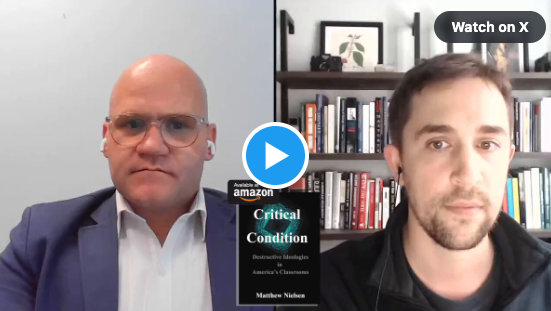While some over the years have lamented the fact that the Thanksgiving holiday is encroached upon by “Black Friday” advertisements and the crowds that result from the busiest shopping days of the year, in critical ways this celebration of private enterprise is a tribute to the most important lessons from Plymouth.
As Tom Bethell of the Hoover Institution describes, it was a rejection of the communal economic system that had utterly failed the pilgrims for three consecutive years in favor of private property rights that led to the bountiful harvest of 1623. Financiers of the colony prohibited private ownership of homes and gardens out of fear that colonists with their own properties would neglect the collective effort to which the financiers were entitled a 50% share. With few options available to finance their voyage, the pilgrims accepted these unfavorable terms.
After much death and famine, the young colony recognized that a new economic order must be adopted to prevent further starvation. In Governor William Bradford’s own account Of Plymouth Plantation (see pages 162-164) he records how the colony assigned each family a parcel of land and empowered each family with the rights to enjoy the fruits of their own labors. Under this new system, Governor Bradford describes that far more corn was planted and the people were much more content, “for it made all hands very industrious.” He continues:
“The women now went willingly into the field and took their little ones with them, to set corn, which before would allege weakness and inability; whom to have compelled would have been thought great tyranny and oppression.
“The experience that was had in this common course and condition, tried sundry years, and that amongst godly and sober men, may well evince the vanity of that conceit of Plato and other ancients…that the taking away of property, and bringing in community into a common wealth, would make them happier and flourishing; as if they were wiser than God. For this community (so far as it was) was found to breed much confusion and discontent, and retard much employment that would have been to their benefit and comfort.
“For the young men that were most able and fit for labor and service did repine that they should spend their time and strength to work for other men’s wives and children without any recompense. The strong, or man of parts, had no more in division of victuals and clothes, than he that was weak and not able to do a quarter the other could; this was thought injustice. The aged and graver men to be ranked and equalized in labor, and victuals, clothes etc., with the meaner and younger sort, thought it some indignity and disrespect unto them. And for men’s wives to be commanded to do service for other men, as dressing their meat, washing their clothes, etc., they deemed it a kind of slavery, neither could many husbands well brook it.”
The virtues of private enterprise were recognized by America’s earliest European settlers and became an important part of America’s DNA. The respect for private property was subsequently enshrined in our Constitution’s Bill of Rights which states that “[no person shall] be deprived of life, liberty, or property, without due process of law; nor shall private property be taken for public use, without just compensation” (Amendment V).
These free-market, limited-government principles that our country was founded upon led our country to be the most productive economy in the world and has done more to lift individuals out of poverty than any government program ever could.
Additionally, these principles of freedom have been exported across the globe and have benefitted the citizens of many different countries where governments have similarly adopted policies that respect private property and individual rights.
In contrast, every time communal systems have been tried, the result has been the same devastation as was seen in the pilgrims’first three years.
It is overwhelmingly disturbing to see the devastation ravaging the once wealthy and powerful country of Venezuela. Earlier this year, an article in The New York Times documented the horrors of the failed policies of the Nicolás Maduro and Hugo Cháves regimes that confiscated entire industries of private property to put in place a command economy.
“It’s really hard to think of a human tragedy of this scale outside civil war,” the New York Times quotes Kenneth Rogoff, of Harvard University, who was previously a chief economist forthe International Monetary Fund. “This will be a touchstone of disastrous policies for decades to come.”
The Heritage Foundation’s 2019 Index of Economic Freedom ranks Venezuela 179th in economic freedom right between the communist regimes of Cuba and North Korea—two countries whose devastation resulting from the lack of respect for private property has rivaled that of Venezuela.
North Korea provides particularly striking evidence that the country’s economic woes are the result of its communist policies. Much like the divided Berlin of a generation ago, the regions of North and South Korea had similar economies prior to the country’s post World War II division. But, with a Russia installed communist government in place in the north and a U.S. allied government to the south, significant divergences emerged in the standards of living, GDP, health and wellness, and even life expectancy among the Korean populations divided by the 38th parallel.
The chart below reported by the BBC shows the tremendous difference in production that results from a Korean economy that is liberated and respects private property and one that remains isolated under authoritarian communist control.
control.
As South Korea enacted free market policies, its economy flourished and grew to be the 12th largest in the world while communism continues to condemn Koreans in the north to perpetual poverty.
Perhaps the only image more compelling than the GDP comparison above is the view from space of the Korean Peninsula at night. In the image below, South Korea is seen as a thriving metropolis brightly illuminating the night sky while the outlined North Korea is barely distinguishable from the ocean waters to its east and west.
west.
From Communist Russia to Cuba, from North Korea to Venezuela and every other nation state that has rejected the principles of free enterprise and private property, the results have been the same: poverty for all except the oppressive ruling class (note the small light emanating from the North Korean capital while the rest of the country remains in darkness).
With private enterprise being such an integral part of the American story and of America’s success, and with such stark examples of the very real harm that befalls all who live within economic systems that do not respect private property, I struggle to understand why some are so quick to condemn the successes of private entrepreneurs operating fairly in a free marketplace.
The Arizona Republic’s coverage of the private entities that provide public charter school educational services in Arizona is the latest example of this contradiction. Charter school laws were designed to harness the awesome power of the free marketplace to improve the quality of our public school education. And, for that reason, the laws were written to treat each charter holder as a private entity that would rise or fall on its own merits—on its ability to attract and retain students whose parents determined that the charter holder’s offering was the best fit for their children.
This model has proven to be a tremendous success for all public school students in Arizona. As a leader in the school choice movement, Arizona was the first state to reach the critical mass of competition that was necessary to realize all of the anticipated benefits of a robust marketplace for K-12 education.
As Robert Robb describes in his column focusing on Matt Ladner’s analysis of test results, Arizona students’ improvement on the National Assessment of Education Progress from 2005 to 2017 was double the national average because of the competitive marketplace for K-12 education. These increases in NAEP scores did not just occur at charter schools. The invisible hand of the free marketplace that Adam Smith described in 1776 is alive and well in Arizona’s K-12 education system. The competition for students resulted in increased learning at all schools. Just as Ronald Reagan characterized the competitive marketplace, educational freedom has created a rising tide that has lifted all boats.
This is an amazing success story that should be celebrated and replicated. Instead, the reporters at the Arizona Republic, astonishingly, imply that the state should reverse course from this tremendous success. Their reporting suggests that the state should not contract with private entities to provide these educational services. Article after article condemns standard business practices that are essential rights of a private enterprise. These condemned practices include earning a profit, establishing the private entity’s own procurement processes that protect its interests, and accumulating privately owned property.
The Republic reports these practices as somehow nefarious because they cannot occur at governmental entities, such as school districts. But this perspective ignores the fact that the state deliberately allowed for privately-held enterprises to compete with the government-provided services in an effort to improve all educational outcomes and that improvement has resulted. It ignores the fact that these traits make up the fundamental differences between the public sector and private enterprise. And, it ignores the fact that these traits are what make free enterprise so effective at creating value for customers and owners in addition to all other participants in the economy.
Additionally, the marketplace makes all private-sector actors accountable to their customers. Private-sector education providers are 100% accountable to parents for every state dollar that the private entity receives. If the parents of charter school students or private school students funded by taxpayer supported scholarships decide that the services provided at their school are insufficient then they enroll their students in a different school. If too few parents choose to enroll their students at a school then it closes. This is the complete accountability that makes the marketplace so powerful and effective. It rewards enterprises that successfully provide sought after goods and services while indifferently allowing those who do not to fail.
Twenty years ago, Arizona decided to open its K-12 public education services to the private sector to allow the competitive marketplace to work its magic. As the utilization of school choice has increased over two decades so have educational outcomes. Arizona applied the principle that William Bradford understood: private ownership over the means of production leads to innovations, efficiencies and increased productivity.The principle has held true everywhere it has been tested.
As Americans, we annually remember the important example of gratitude set by the surviving Mayflower passengers who finally achieved their much needed harvest. Let’s also remember their important turn towards privatizing their economy.
As private enterprise continues to benefit America’s economy and Arizona’s schools, let’s honor the pilgrims’ legacy with continued support for free markets. Let’s celebrate the fact that all Arizona schools have improved their educational results after the enactment of educational choice. Let’s celebrate the fact that the third best high school in the country is located in Arizona and was founded here due to Arizona’s free market for education. And, instead of treating the private entrepreneurs in educational services as some sort of robber barons for having earned a reasonable return after decades of building a business from scratch, let’s celebrate the fact that a wonderful variety of educational environments are available to Arizonans due to their efforts.
As expected, the marketplace aligned the interests of individuals with the broader interests of the community. Let’s celebrate this invisible hand that created a wonderful rising tide for all of Arizona’s public school students.


